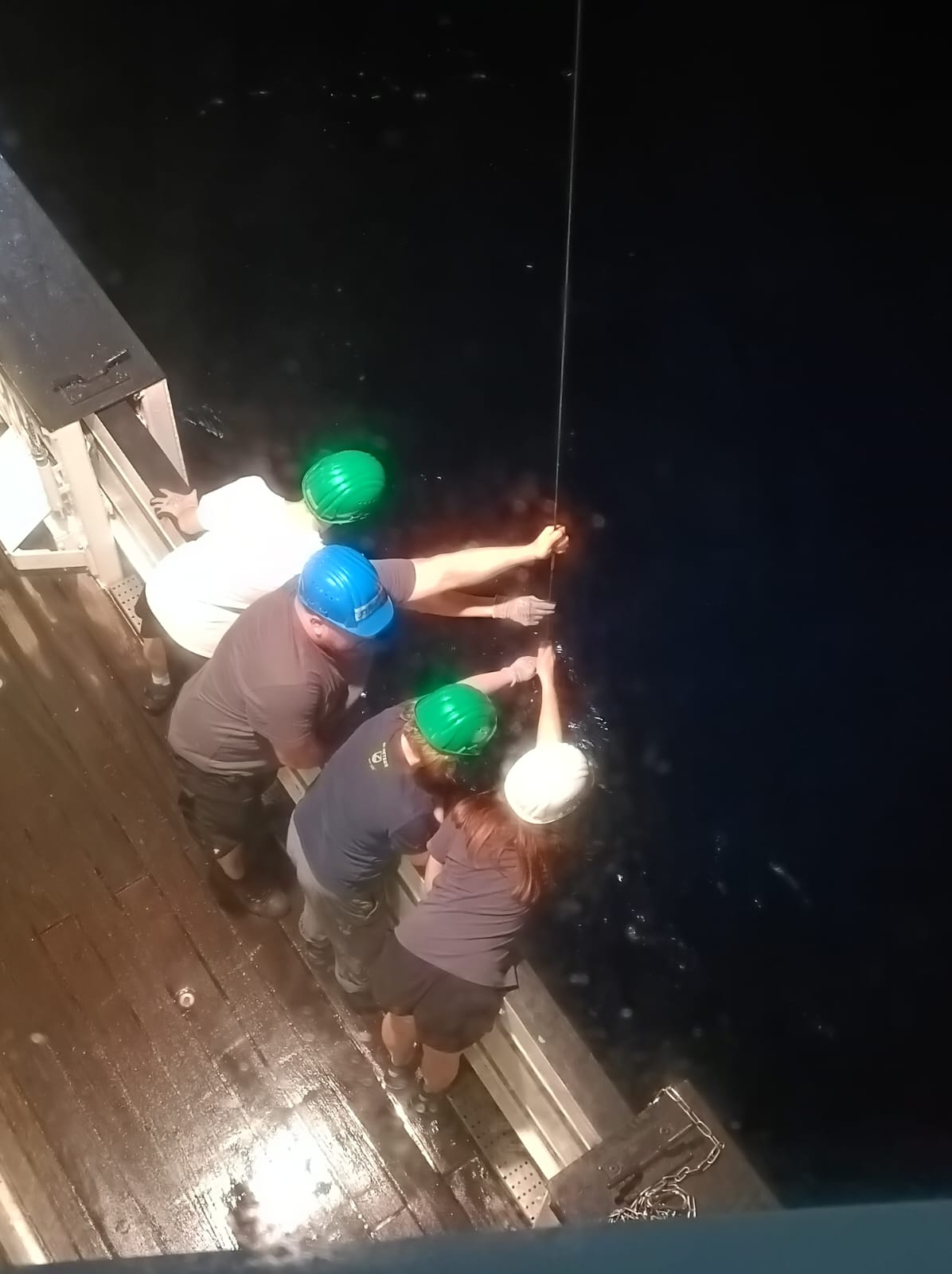by: Martha Gledhill, Anja Conventz, Albert Firus (GEOMAR Helmholtz Center for Ocean Research Kiel)

When the other scientists or the crew of the SO305 walk past the door of “Dry-Lab II”, they often wonder about the interesting outfits worn by us – Martha, Anja and Albert. Our laboratory itself also looks different from the other laboratories on board the SONNE. This is because we have set up a “clean room tent” in our lab with the help of plastic sheeting and an air-filtering laminar flow hood to ensure a trace metal-free environment for our samples – hence the white full-body suits.

Our two water sampling systems are GoFlo bottles and a towfish. With the six GoFlos, we take 8 litres of water samples per GoFlo at the stations down to a depth of 500 m below the sea surface. By chance, we usually take our samples at sunrise and sunset, which allows us to get up early and admire the beautiful vista. While the GoFlos are slowly lowered into the water one after the other by the crew, we often observe sea life such as flying fish and squid.
The six GoFlo bottles are attached to a Kevlar wire at regular distances from each other. Our bottles are comparable to sampling bottles on the regular CTD, but they have a ball mechanism at both ends of the bottle that releases the bottle when a weight hits it, closing the bottle. At the same time, another weight hanging on the bottle is released to close the next one. Following this chain reaction, the bottles close within a few minutes, which you can physically feel when you put your hand on the wire. Once the bottles are closed, they are brought back on deck and from there to the laboratory, where they are prepared for sampling.

In addition to this sampling, we also take samples of the surface water from a depth of 2 metres using a towfish. The SONNE does not have to stop for this and so water is constantly pumped from the sea through more than 75 metres of hose and into our laboratory. There we then take samples at regular intervals for later analysis of various trace metals, isotopes and nutrients.
Why do we have to use the special equipment, clean tent and full-body suit to collect our samples? Because we want to measure iron and other trace metals such as zinc and manganese in the ocean and need to protect our samples from our big steel ship and other sources of metal contamination. When we protect our samples thoroughly, we can understand where the trace metals in the ocean surface come from and how these essential metals influence phytoplankton growth in the Bay of Bengal.
